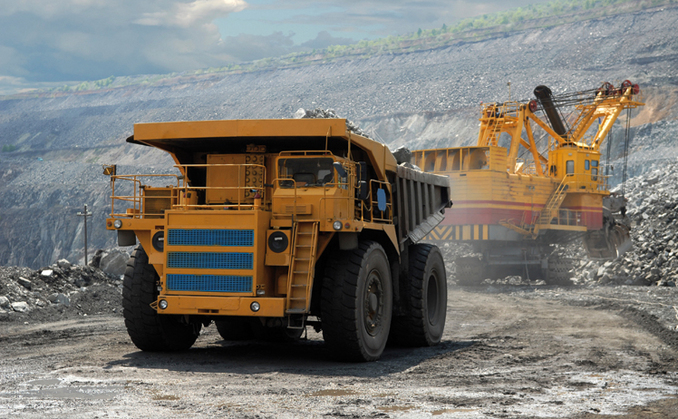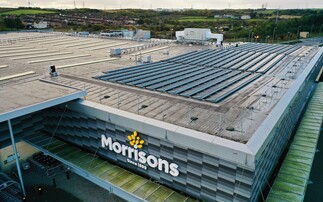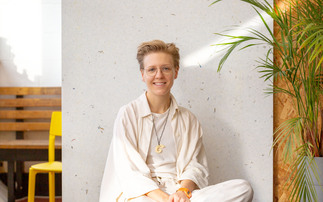
Influential analyst forecasts how iron ore and steel supply chains could transform themselves as the global economy decarbonises
Achieving net zero emissions by 2050 will depend on a major transformation of iron and steel value chains that presents a $1.4t investment opportunity for companies and investors, according to analysis from Wood Mackenzie.
In a report published earlier this month, the influential analyst has set out the significant decarbonisation challenge facing the emissions-intensive industry, which it estimates must shrink its emissions by more than 90 per cent on 2021 levels to align with a 1.5C trajectory.
Aligning the sector with global climate goals will require significant investment in clean technologies and energy. Wood Mackenzie calculates that decarbonising the sector will require 2,000GW of renewable capacity, roughly equivalent to 67 per cent of global capacity, as well as 52Mt of green hydrogen, 470Mt of carbon capture and storage (CCUS).
The sector's transition to net zero will also require a doubling of scrap metal output and a five-fold increase in production of high-grade iron ore, according to the research.
"Decarbonising the steel industry is a staggeringly big task," said Malan Wu, research director at Wood Mackenzie. "To meet Wood Mackenzie's 1.5 C accelerated energy transition scenario by 2050, steel emissions must reduce by more than 90 per cent from current levels. There is an urgent need to act now to decarbonise the iron and steel sectors. Business as usual is no longer sustainable."
Decarbonising steel is critical to global climate goals, with the energy-intensive setor estimated to be responsible for roughly seven per cent of global carbon emissions. Steel is a building block of many of the technologies required for a zero carbon economy, from clean energy and low carbon homes to electric cars and electricity transmission infrastructure. Demand for the material is expected to increase over the coming decades as the population grows and the net zero transition gathers place.
Long perceived as a major challenge for global efforts to reach climate goals, a raft of reports in recent years have argued a significant reduction in steel emissions is possible by 2035, largely by phasing out the blast furnace basic oxygen furnace (BF-BOF) process of primary steelmaking, in which iron ore is smelted from heat generated from burning coal, with the fossil fuel also acting as a reducing agent to turn the ore into metal.
In its place, steelmakers should be investing in the electric arc furnace (EAF) method, which uses electricity to produce steel either from recycled scrap metal (Scrap-EAFs) or from iron ore that has been reduced in a shaft furnace by a gas - in this case, hydrogen - in a process known as direct reduced iron (H-DRI-EAF).
"To achieve net zero by 2050, three-quarters of steel production will have to use low-carbon technologies, requiring the commercialisation and uptake of new technologies such as H-DRI-EAF and molten oxide electrolysis running on renewable energy," Wu said.
Wood Mackenzie stresses that a significant bulk of its topline $1.4tr investment would also need to be spent in transforming mining operations. The analysis calculates that up to $300m will have to go into creating zero carbon mines, developing more "high-grade" mines, and establishing DR-grade pellet plants that can be used as an input for the H-DRI-EAF method.
The analyst calculcates that 350Mt of new high-grade ore projects need to be developed in Brazil, Africa and Australia to "feed green steel", warning there could be a shortage of DR-grade pellets from next decade. This is because just eight per cent of iron ore production is "prime-grade", it said.
To reach net zero, the mining community will have to work hand-in-hand with the steelmakers they supply to, Wood Mackenzie said. A number of collaborations have already been annouced between iron ore majors and steelmakers focused on ramping up supplies of ‘green' ore, on exploring the use of hydrogen and biomass fuel, and conducting research on carbon capture and utilisation, it said.
Wood Mackenzie noted that while the top five iron ore mining companies had set out climate targets - with the top four also disclosing how they intended to invest and reduce operational emissions by 2030 - there has been "no major noise by the tier two and tier three players".
The report also stresses that the decarbonisation of iron and steel industry also depends on policy, in particular the introduction of aggressive carbon pricing and taxation in China, where more than 60 per cent of steel is produced.
Wu said that regoinal disparity would emerge as the sector decarbonised. "Carbon mitigation tactics and strategies will vary widely, with mature economies - such as the EU, the US, Japan and South Korea - spending 50 per cent more than emerging economies," she said. "Mature economies will also decarbonise much faster incurring a higher carbon abatement cost."
This article is part of the Net Zero Commodities Hub, hosted in partnership with Wood Mackenzie.
Want to find out more about the net zero transition and how businesses are seizing the opportunities on offer? Sign up now for the Net Zero Festival, which will take place in London on September 28th and 29th.










